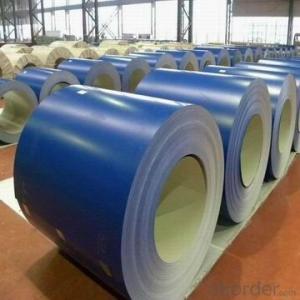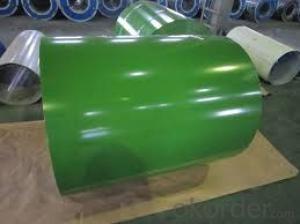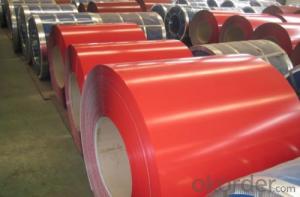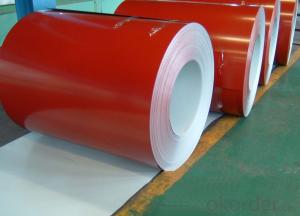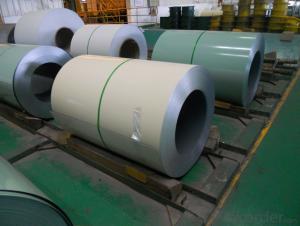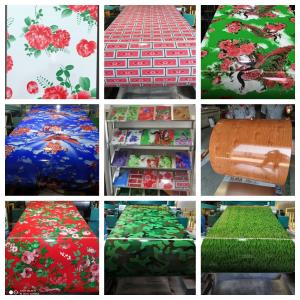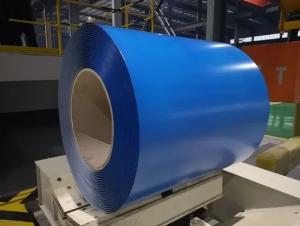Popular PPGI/PPGL Color Coated Coils(0.12-1.5mm)*(600-1250mm)
- Loading Port:
- Tianjin
- Payment Terms:
- TT OR LC
- Min Order Qty:
- 25 m.t.
- Supply Capability:
- 50000 m.t./month
OKorder Service Pledge
OKorder Financial Service
You Might Also Like
Specification
1.PPGL Color Coated Coils Features:
. A strong anti-corrosion properties, good corrosion resistance. The use of hot dipped galvanized steel substrates for the Color Painted steel coil, with the exception of zinc have anti-corrosion layer, a layer of coatings have seized coverage and protection, allowing effective anti-rust products, galvanized coil about life than double.
. A good cold-formed molding processing, users can directly processed into finished products. Substituting wood to steel, easy to transport, and efficient construction, energy conservation.
2.Applications of PPGL Color Coated Coils
* Used as roof panel, wall panel in steel structure in warehouse,
factories exhibition hall container houses, cold storage
*It is also mainly used in light industry, automobile, construction,
animal husbandry, fishery and commerce, etc,
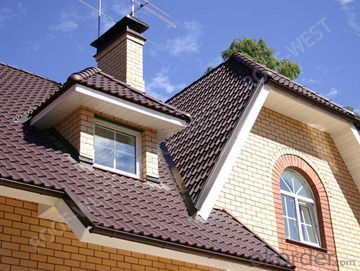
3.Product information:
| PRODUCT | PPGL Color Coated Coils |
| STANDARD | GB/T-12754: 2006, JIS330, ASTM A653, JIS G330, GB/T2518, ASTM A792, JIS G3321, JIS G3317 |
| BASE METAL | Hot dipped Galvanized steel sheet/coil, Hot dipped Galvalume steel sheet/coil |
| EQUIPMENT | Double coating double baking; three coating three painting |
| SUPPLY CAPACITY | 500,000 Tons per Year |
| SIZE | Thickness: 0.3mm-1.0 mm,thickness tolerance: +/- 0.02mm Width : 700mm—1250mm |
| ZINC COATING | 30g/m2-150g/m2 |
| PAINT THICKNESS | Top Side: 10-25 microns; Back Side: 4-8 microns |
| COIL WGT | Normally 5 Tons per Coil, aslo as required by customer |
| COIL ID | 508mm/610mm |
| SURFACE PAINT | EP, PE, HDP, SMP, PVDF |
4.PPGL Color Coated Coils image:
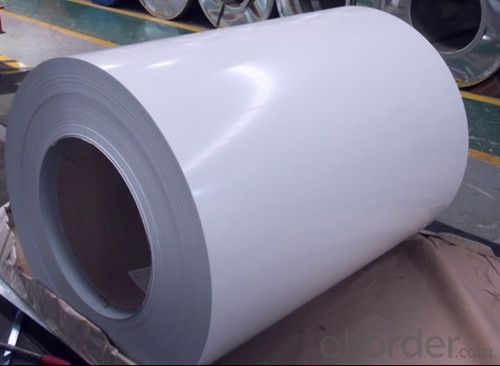
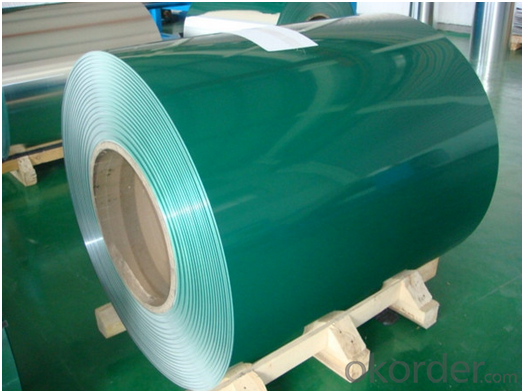
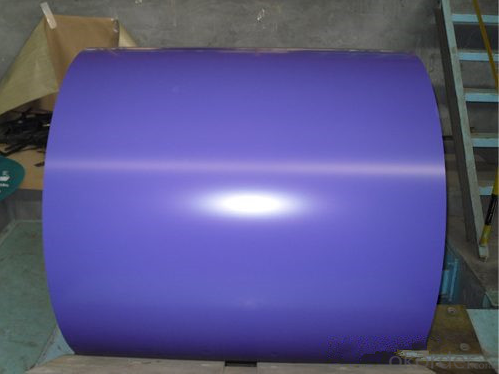
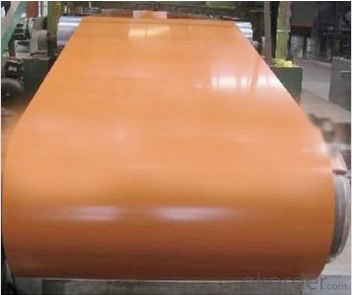
5.FAQ
We have organized several common questions for our clients,may help you sincerely:
①How about your Warranty?
Warranty: 1-Year for the whole light. Warranty is based on correct storage, installation, using and maintenanc
②How to guarantee the quality of the products?
We have established the international advanced quality management system,every link from raw material to final product we have strict quality test;We resolutely put an end to unqualified products flowing into the market. At the same time, we will provide necessary follow-up service assurance.
③How long can we receive the product after purchase?
In the purchase of product within three working days, We will arrange the factory delivery as soon as possible. The pecific time of receiving is related to the state and position of customers.Commonly 7 to 10 working days can be served.
- Q: What are the different types of steel coil processing equipment?
- In the manufacturing industry, various types of steel coil processing equipment are utilized. These equipment are specifically designed to handle and process steel coils in different ways, enabling efficient and precise production. Some commonly used steel coil processing equipment are as follows: 1. Decoilers: These machines are employed to unwind steel coils and feed them into the processing line. Equipped with motorized systems, they ensure a steady supply of material by controlling the unwinding process. 2. Straighteners: The purpose of straighteners is to flatten and straighten steel coils that may have become distorted during the coiling process. By utilizing a series of rollers, they eliminate any bends or waves, guaranteeing a smooth and consistent feed to the next processing stage. 3. Slitters: Slitters are responsible for cutting steel coils into narrower strips, allowing the production of various widths of steel sheets or strips. They consist of multiple sets of adjustable circular blades used to achieve the desired width. 4. Levelers: Levelers are utilized to correct any surface imperfections in steel coils, such as wavy or undulating surfaces. By means of a series of rollers, they apply pressure and reshape the material, resulting in a flat and uniform surface. 5. Shears: Shears are used to precisely cut steel coils into specific lengths. They can be either hydraulic or mechanical and are designed to provide clean and accurate cuts, ensuring the desired dimensions are achieved. 6. Recoilers: Recoilers are essential for rewinding processed steel coils back into tightly wound coils. They can be either motorized or manual and are crucial for storage and transportation purposes. 7. Edge trimmers: These machines are employed to remove any excess material from the edges of steel coils. By ensuring a clean and consistent edge, they enable better handling and further processing. 8. Coil cars: Coil cars are utilized for the transportation of steel coils within the processing facility. They are equipped with hydraulic or mechanical systems, facilitating easy loading and unloading of coils onto other equipment. These represent only a few examples of the diverse range of steel coil processing equipment used in the industry. Each piece of equipment plays a vital role in the manufacturing process, ensuring the efficient production of high-quality steel products.
- Q: I'm doing a project on stainless steel dining utensils and its a little more difficult than i thought it would be. There are no sites on the web that tells the creator or when it was first used. There's no sites that that i can see of that talk about the history of stainless steel dining utensils, only dining utensils in general. Please help, i can't change my project now ):
- The development of 18/10 stainless steel was the brainchild of Harry Brearley who, in 1913, was working on a project to prevent rifle barrels from corroding so much during use. His analysis of the rifle barrels involved having to dissolve them in acid but, by chance, he noticed that steel which had a high chromium content did not dissolve in the acid. He experimented with varying proportions of chromium and finally produced a stainless steel with 12.8% chromium. He moved to Thos Firth Sons in 1914 and commercial production of stainless steel cutlery began. Refinements were necessary because early versions of stainless steel knives were harder to produce and polish, and they would not cut as well as the existing knives.
- Q: What are the dimensions of steel coils used in the agricultural machinery industry?
- The dimensions of steel coils used in the agricultural machinery industry can vary depending on the specific application and requirements. However, common dimensions for steel coils used in this industry typically range from 0.5 to 2.0 millimeters in thickness and 600 to 1500 millimeters in width. These dimensions are suitable for various agricultural machinery components such as panels, frames, brackets, and reinforcements. It is important to note that these dimensions can be customized based on the specific needs of the machinery or the manufacturer's specifications.
- Q: How are steel coils used in the manufacturing of industrial machinery?
- Steel coils are commonly used in the manufacturing of industrial machinery to form various components, such as shafts, gears, and frames. These coils are typically cut, shaped, and welded into the desired forms to create strong and durable parts that can withstand heavy loads and high temperatures. Additionally, steel coils are often used as raw materials for fabricating machine tools, molds, and dies, which are essential for the production of industrial machinery.
- Q: What is the average width tolerance for steel coils?
- The average width tolerance for steel coils can vary depending on the specific industry and application, but typically it ranges from ±0.005 to ±0.25 inches.
- Q: Can steel coils be coated with noise-reducing materials?
- Yes, steel coils can be coated with noise-reducing materials. Coating the coils with noise-reducing materials helps to minimize noise levels and vibrations, making them suitable for various applications where noise control is important, such as in automotive, construction, and manufacturing industries.
- Q: How are steel coils inspected for defects after recoiling?
- Steel coils are inspected for defects after recoiling by conducting visual inspections, using non-destructive testing methods such as ultrasonic testing or magnetic particle inspection, and conducting measurements to check for dimensional accuracy and straightness.
- Q: How are steel coils cut to size?
- Steel coils are cut to size using a variety of methods such as shearing, slitting, or laser cutting. These processes involve using specialized machinery to ensure precise and accurate cuts according to the required dimensions.
- Q: I already have the county permits and bank loan, but the foundation hasn't been poured. Is it too late to convert to steel?
- Steel is going to be a whole different world. You will need to go back to square one and get house plans that are drawn for structural steel. First thing you need to do is find a builder that knows how to build with steel and get an idea of the price.
- Q: How are steel coils inspected for quality control purposes?
- Steel coils are inspected for quality control purposes through a series of tests and checks. This may include visual inspection to detect any surface defects, such as scratches or dents. Additionally, measurements and tests are conducted to ensure dimensional accuracy, such as thickness, width, and weight. Non-destructive testing methods, such as magnetic particle testing or ultrasonic testing, are also employed to identify any internal defects, like cracks or voids. These comprehensive inspections help ensure that steel coils meet the required quality standards before they are used in various applications.
Send your message to us
Popular PPGI/PPGL Color Coated Coils(0.12-1.5mm)*(600-1250mm)
- Loading Port:
- Tianjin
- Payment Terms:
- TT OR LC
- Min Order Qty:
- 25 m.t.
- Supply Capability:
- 50000 m.t./month
OKorder Service Pledge
OKorder Financial Service
Similar products
Hot products
Hot Searches
Related keywords
